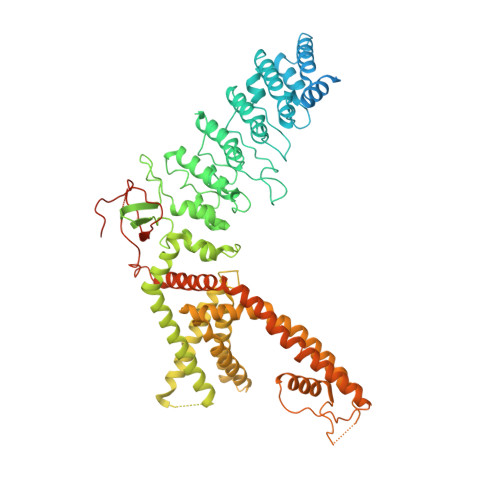Gating of human TRPV3 in a lipid bilayer.
Deng, Z., Maksaev, G., Rau, M., Xie, Z., Hu, H., Fitzpatrick, J.A.J., Yuan, P.(2020) Nat Struct Mol Biol 27: 635-644
- PubMed: 32572252
- DOI: https://doi.org/10.1038/s41594-020-0428-2
- Primary Citation of Related Structures:
6UW4, 6UW6, 6UW8, 6UW9 - PubMed Abstract:
The transient receptor potential cation channel subfamily V member 3 (TRPV3) channel plays a critical role in skin physiology, and mutations in TRPV3 result in the development of a congenital skin disorder, Olmsted syndrome. Here we describe multiple cryo-electron microscopy structures of human TRPV3 reconstituted into lipid nanodiscs, representing distinct functional states during the gating cycle. The ligand-free, closed conformation reveals well-ordered lipids interacting with the channel and two physical constrictions along the ion-conduction pore involving both the extracellular selectivity filter and intracellular helix bundle crossing. Both the selectivity filter and bundle crossing expand upon activation, accompanied by substantial structural rearrangements at the cytoplasmic intersubunit interface. Transition to the inactivated state involves a secondary structure change of the pore-lining helix, which contains a π-helical segment in the closed and open conformations, but becomes entirely α-helical upon inactivation. Together with electrophysiological characterization, structures of TRPV3 in a lipid membrane environment provide unique insights into channel activation and inactivation mechanisms.
Organizational Affiliation:
Department of Cell Biology and Physiology, Washington University School of Medicine, Saint Louis, MO, USA.
















